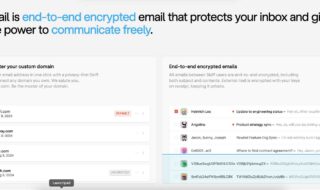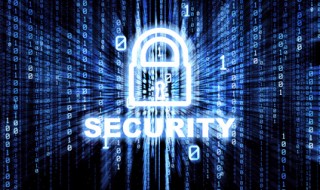
By now, you’ve likely heard about ransomware: A form of malware that holds your computer files hostage until you pay a ransom to the hackers to regain access. In the last several years there have been several high-profile ransomware attacks, most notably the WannaCry attack that paralyzed businesses around the world in 2017. Ransomware attacks aren’t always so widespread and well-coordinated, though. In fact, the majority of ransomware attacks are actually small-scale crimes of opportunity, affecting average people who are more likely to pay the ransom to make it “go away.”
It’s important, then, to understand how ransomware works, and not fall into a false sense of security because of some of the common myths about the increasingly common malware.
Contents
Myth #1: Ransomware Only Comes via Phishing Emails
It’s true that most ransomware attacks arrive via email. Again, while some attacks are targeted, the vast majority are random, and sending spam emails is still the easiest way to successfully infect a significant number of machines. However, ransomware doesn’t always come from infected emails. Although it is less common, malware is also spread via file sharing and malicious websites. Therefore, it’s imperative to keep your antivirus software up-to-date, scan all files (even those from trusted sources) and use caution when clicking on websites. Using an ad blocker can also help prevent pop-up ads from installing ransomware on your machine without your knowledge. Ultimately, realizing that ransomware can come from anywhere will ensure you stay vigilant and protected.
Myth #2: Paying the Ransom Means Getting Your Data Back
If you are unlucky enough to become infected with ransomware, you might be tempted to just pay the ransom – especially if it’s a relatively small amount – just to solve the problem and get your files back. Most computer security experts and law enforcement recommend against this, though. For starters, there is no guarantee that you’ll actually get your data back when you pay up. In fact, surveys indicate that about half of ransomware victims never get their data back when they pay up. It’s never a good idea to pay, but rather get help with ransomware removal to permanently remove the infection and possibly restore all of your files.
Myth #3: Backups Will Keep You from Losing Data
One of the cornerstones of computer security is maintaining backups of your data, so nothing is ever lost in the event of a problem. This is still excellent advice, but when it comes to ransomware, it comes with a few caveats. For starters, not all backups are created equal. If you have been lax in performing backups or don’t have automatic backups enabled, there’s a good chance that your backups are incomplete. Even more concerning is the fact that ransomware can also hold your backups hostage, meaning that the only way to access any of your data is the get rid of the ransomware. Therefore, it’s best to not only be diligent in conducting backups, but be sure to store your data somewhere other than your machine that can be accessed from another machine if necessary.
Myth #4 Only Large Businesses Are at Risk
Although large attacks that infect major corporations tend to get the most attention, the fact remains that the majority of victims of ransomware attacks are small businesses and individuals. The average ransom demand is $544, which indicates that hackers are going after smaller targets that don’t have the deep pockets of a big company. Therefore, you need to be vigilant and take steps to prevent infection.
 Myth #5 Ransomware is Always Easy to Remove
Myth #5 Ransomware is Always Easy to Remove
To hear some people talk about ransomware, it’s simply a matter of finding the offending program (usually by starting your computer in Safe Mode) and removing it. While it would be great if everything was that simple, it’s rarely the case. For the average person, ransomware removal is more complex, and requires professional help. That’s not to say that ransomware can’t be removed, as it generally can be, but it’s not always a simple process. And just because it’s removed, doesn’t mean that your files are fine. Some ransomware will permanently corrupt some files, and if you aren’t careful, it’s possible that the backup files you reinstall may re-infect your machine. Therefore, it’s best to get help.
Ransomware can be terrifying, but it doesn’t mean the end of your computer or your files. The best way to deal with it is to avoid it altogether, and when you know the truth behind these myths, you have a better chance of doing that.



